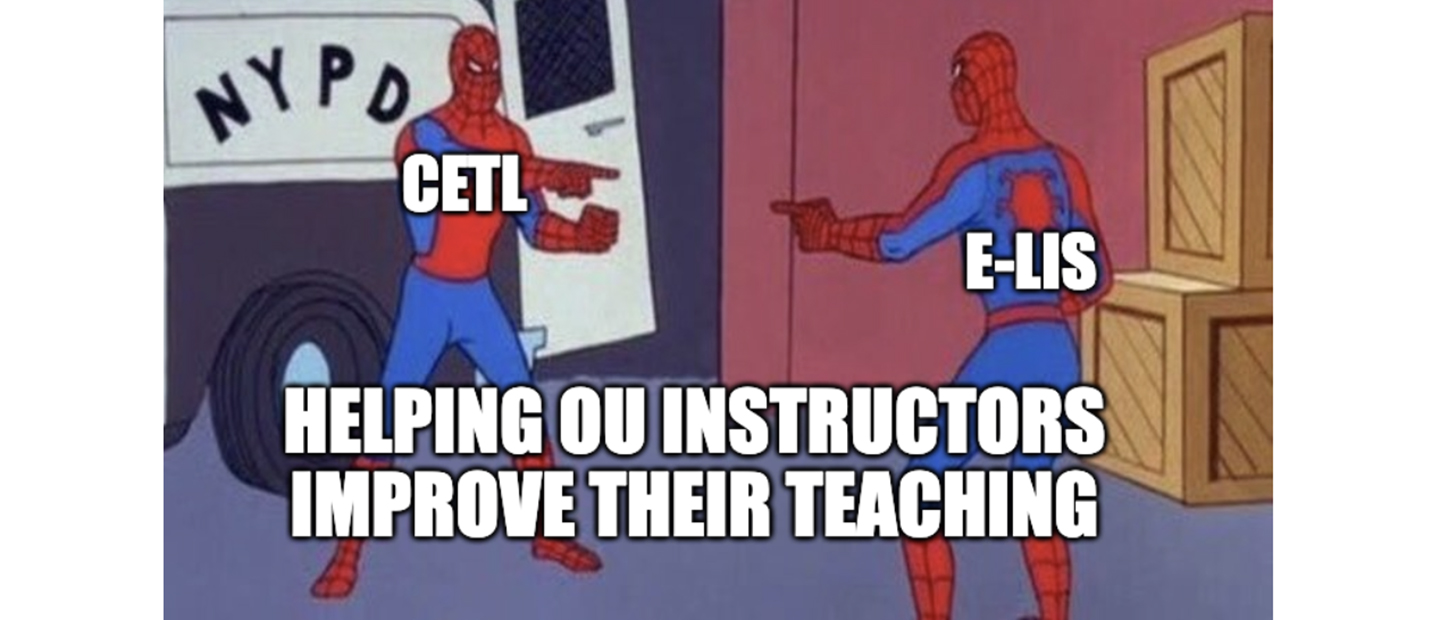Center for Excellence in Teaching and Learning
100 Library Drive
Rochester, Michigan 48309-4479
(location map)
(248) 370-2751
[email protected]

Meme-ingful Teaching: Utilizing and Incorporating Memes in the Classroom
For instructors looking to add some spice and variety to their lectures, memes can be a fun and effective tool to integrate into a course. Memes have the potential to be a pedagogic tool for promoting active participation and engagement. What is a meme? Memes are humorous, viral images with captions that can be useful teaching tools in the classroom. In this teaching tip, let's explore some of the benefits and ways to incorporate memes into your own lessons.
Benefits of Using Memes
Memes are memorable: Using a meme-based approach can enhance student memory. Because memes include images and text in a humorous or relatable way, the content becomes more memorable for students. Connecting information, such as a concept or theory, to a funny, viral, or striking image makes it easier for students to store and recall information.
Simplify concepts: Memes can simplify complex ideas. By presenting complicated ideas or concepts along with a simple image and a short caption, instructors can help students grasp concepts quickly and effectively. These visual aids can lead to a deeper understanding of concepts.
Enhance engagement: Since memes add humor and personality to the learning process, instructors can add variety to traditional lectures and textbooks. When students find humor in their lessons, they are more likely to stay engaged and motivated to learn. Memes give students an opportunity to be creative and have fun while simultaneously learning new concepts or solidifying their knowledge of previous concepts.
Build community: Memes are a popular part of internet culture and when educators incorporate them into their teaching, they tap into a shared cultural experience. Students often enjoy recognizing familiar memes, which can create a sense of community and camaraderie in the classroom. Instructors can post memes in the classroom or on their Moodle course for students to enjoy. They can also include a meme gallery or exhibit to highlight their students' work and creativity.
Promote discussion: Memes are often related to current social and cultural issues, making them excellent conversation starters. To encourage students to think critically and express their opinions, instructors can use memes as a springboard to spark discussions about current events, ethics, and critical thinking.
Example Activities
- Activity 1: Caption your own meme. For this activity, you can either provide an image for students to caption or have your students find their own image to make into a meme. You can have students develop a catchy definition or explanation/summary of a concept or term through a meme.
- Activity 2: Write a story or summarize a process using memes. The instructor chooses images to tell a story or explain a process. For example, in a biology class, an instructor could pick four to five images and add captions to them to make memes that illustrate a process such as photosynthesis. Going one step further, the instructor can ask students to create memes to illustrate a specific process/concept or to narrate a story.
Conclusion
Using memes in teaching offers numerous benefits that enhance the learning experience for both student and instructor. Memes are memorable, engaging, and versatile tools that can simplify concepts, build community, and promote discussion. By embracing memes in education, instructors can effectively reach, teach, and inspire their students. So, the next time you're looking for a creative way to teach, consider adding a dash of memes to your lesson plan—it might just be the missing ingredient for a successful and enjoyable learning experience
References and Resources
Meme Generator
Memes in the Classroom
Using Memes to Teach…Should We? How Much?
Save and adapt a Google Doc version of this teaching tip.
About the Author
Chad Bousley is an Instructional Designer at e-LIS, who helps faculty with online course design, creating interactive activities and implementing online teaching best practices. Outside of the classroom, Chad enjoys learning foreign languages and playing guitar.
Others may share and adapt under Creative Commons License CC BY-NC.